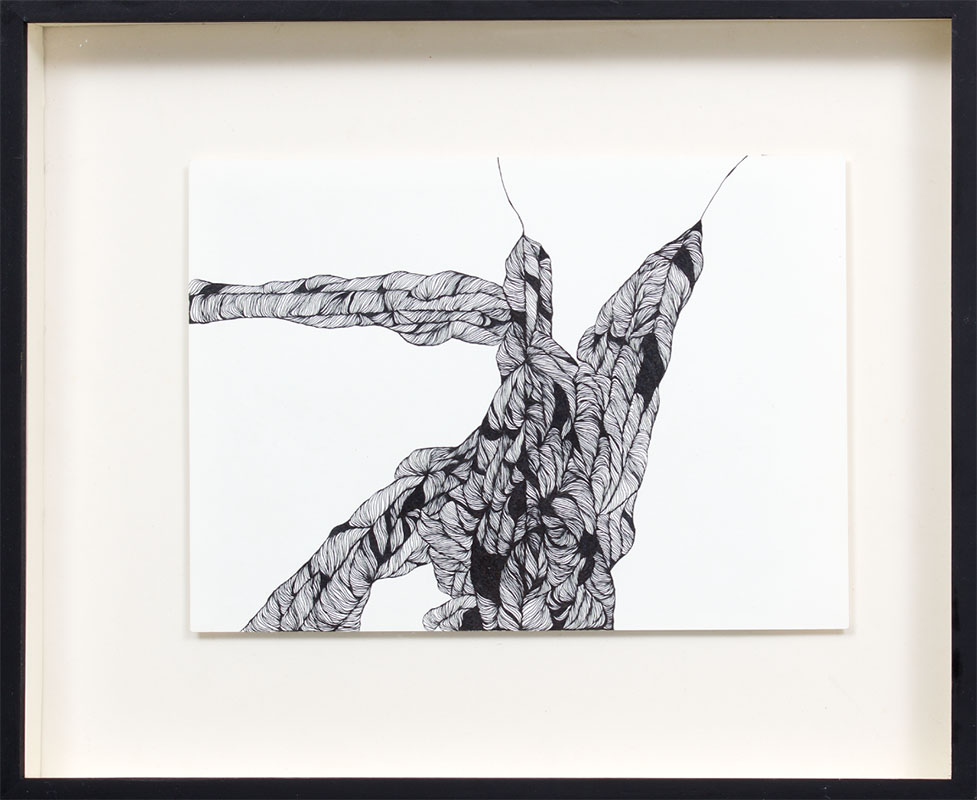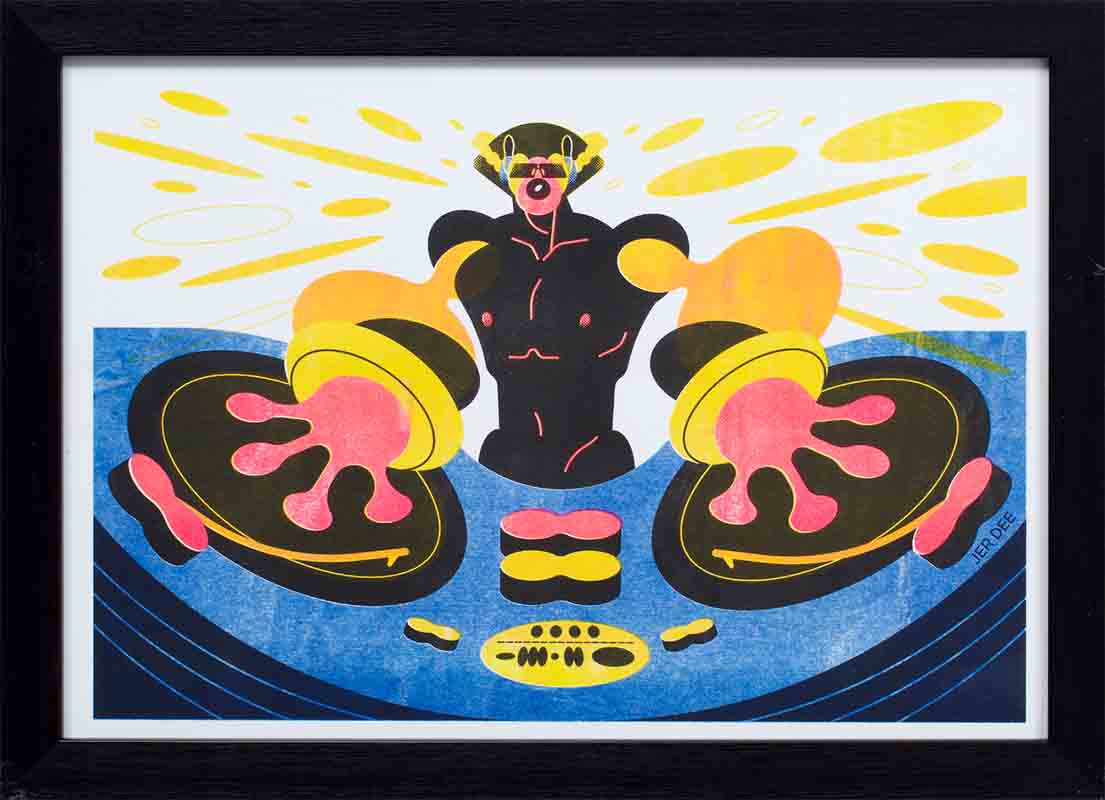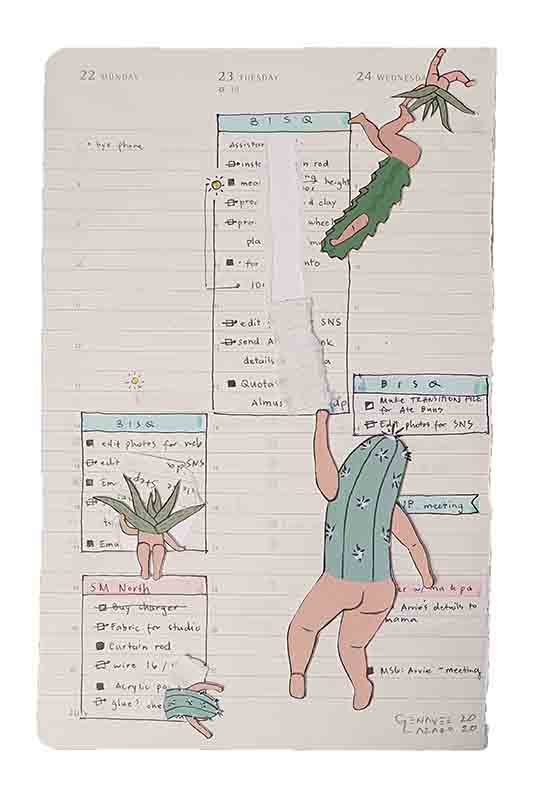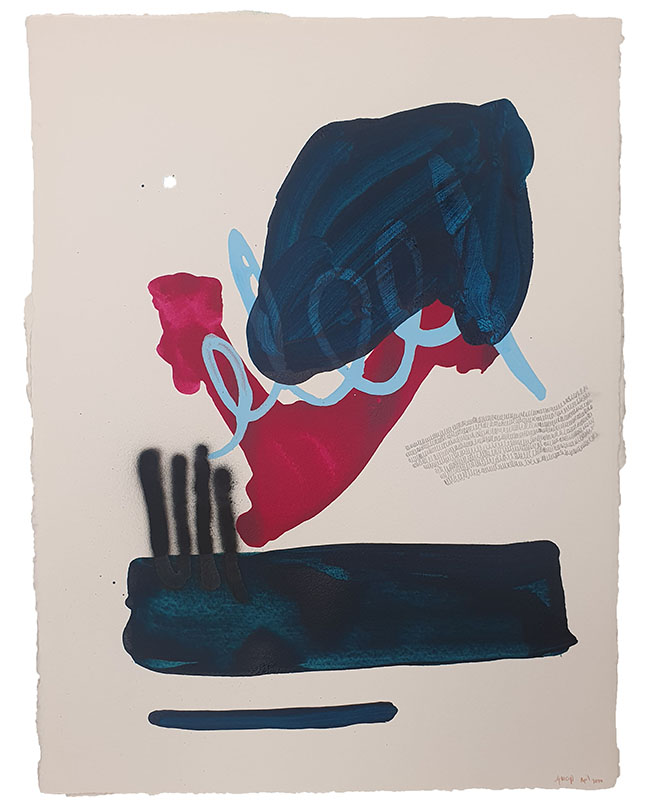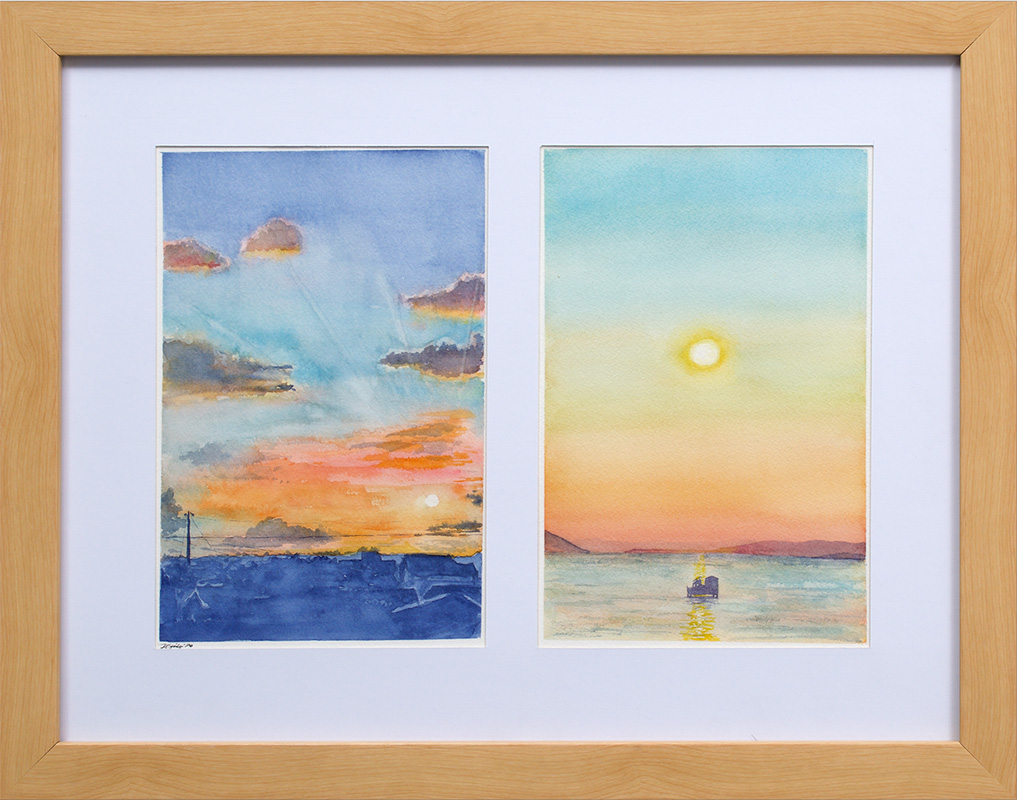A Brief on Artworks on Paper
Drawings, watercolors, photographs, prints—works on paper feature a wide berth, and not all come bleached in white. Apart from what can be applied onto paper, the forms paper itself can take is a mixed bag. It can be specific to the wood pulp (abaca, rice, and narra are local examples) or be made out of cellulose fiber, like that of the works on vellum by Tuchi Imperial. Meanwhile, some artists, like Joey Cobcobo, are trained printmakers who often use paper they make themselves.
It’s a more viable medium than it’s credited for. Accessible, too: in general, the costs of producing and purchasing works on paper are half that of more conventional mediums, making it a great option for artists and collectors to explore the exciting possibilities of media without breaking the bank.
The other side of the coin is that paper by nature is fragile, susceptible to wear, tear, and aging. It’s especially the case in tropical regions. The art industry hasn’t been sitting on its hands as nervous murmurs swelled in the backdrop, however. Conservation practices have become much more commonplace nowadays, with respectable establishments partnering with framers and printers who know to use proper archival material.
So, What Makes It Fragile?
Essentially? Acid. Let us explain. The way paper is made today is not all different from how it was made centuries ago. The intervention of modern technology just made it faster and, for preservation purposes, better.
Paper is made from wood pulp: the result of diced chips of debarked wood cooked in a solution of acid to separate lignin, an organic polymer that turns into acid overtime, causing paper to yellow and go brittle. The lignin residue is then washed out with water and bleach (made of oxygen and peroxide, so no harmful chemicals), resulting in the acid-free paper abundant today.
When under a pH test, if the level falls between the numbers 0-7, it’s acidic. A flat seven indicates it’s neutral. But just because the industry-standard paper produced is “acid-free,” that doesn’t mean it’s off acid for good. (Kids these days.)
Nothing’s Ever Free
Acid can build up internally or be introduced externally. For the former, it’s because paper isn’t all that great fresh off the manufacturing mill, so they need to go through a process called sizing. It’s an umbrella term for the application of additive agents that affects the paper’s printability, smoothness, tendency to absorb liquid, and overall finish.
Environmental factors, meanwhile, are what diligent collectors (such as yourself) know and can control. Air pollutants (mainly sulfur and nitrogen oxides), moisture, rapid changes in humidity (above 5% in 24 hours) and relative humidity in general (anything outside 30-40%), as well as poor storage enclosures all play a part here.
Paper is made of the natural polymer cellulose, a long, repeating chain of glucose molecules joined together. Acids from within the paper and the environment cut these glucose chains into shorter lengths, causing acid hydrolysis, which promotes the degradation of the paper.
As cellulose is colorless, the separation of lignin is also what keeps it white. When art on paper artworks are exposed to sunlight, however, despite how little lignin they have left, the cellulose does what it’s programmed to do, as with plants: Photosynthesis. They want oxygen, they’re all for it! But the extra oxygen molecules alter the polymer’s structure; the physical effect of that is the surface becomes less reflective. They yellow.
How to Care for Art on Paper
But there’s a reason why cases of oxidation and whatever else are seen often in newspapers and abandoned apples, and not with art. Due diligence is practiced all around, that is, by artists, galleries, and happy collectors.
The consistent advice people give is that you should buy the art you love. They aren’t joking. Keeping to acid-free and archival quality materials, like the mounts, clips, and backing, are like the flowers and chocolates you don’t at all begrudgingly gift to your life partner. Or the medical bills you happily shoulder.
No, but really. While art is often tangled with exuberant prices for exuberant people, on a deeper level, art is something you can connect with (possible, even, through a screen). Purchasing one and caring for it properly does more than meet the less than gratified eye: it helps break the art-on-paper taboo, it sends the message that the medium is indeed viable after all, and it encourages collectors to fully explore and appreciate what’s out there.
Anchor photo: Teo Esguerra. Underground Obviously Sounds Terrible. 12 x 16 inches. Acrylic on paper.
All images are artworks from Position Paper (Year Three), courtesy of Galerie Stephanie. The all-paper show features over 50 participating artists in its roster.
The main reference for this article is the US Library of Congress Deterioration and Preservation of Paper brochure.




